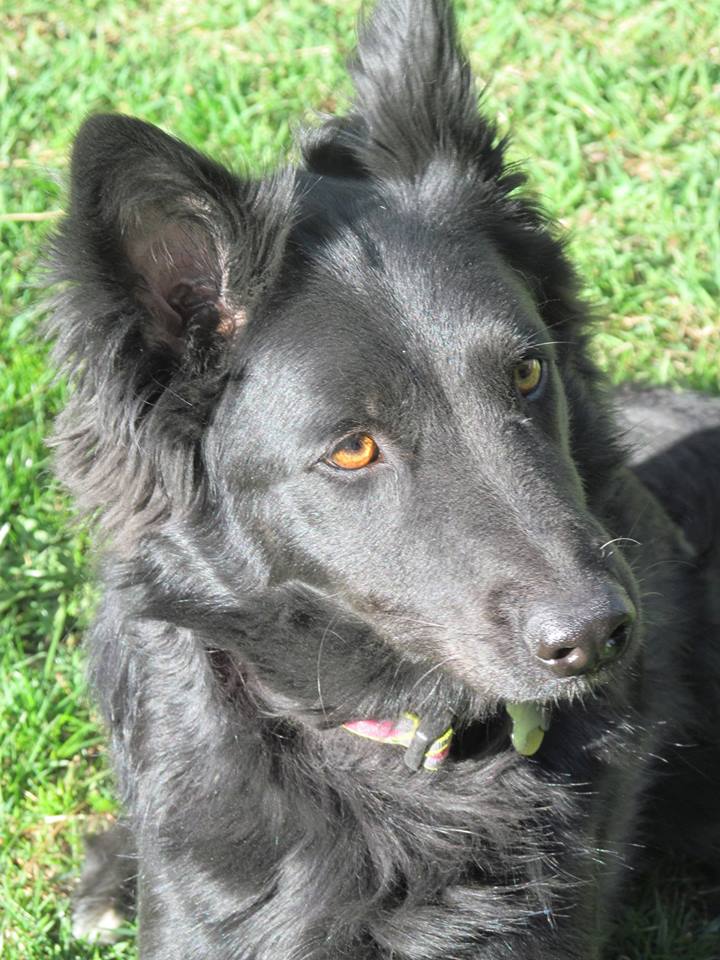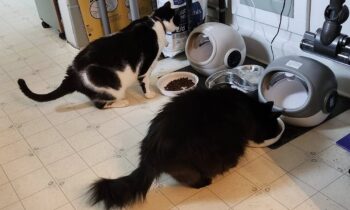
Training (as you may have guessed from my previous blogs) usually consists of many repetitions of many tiny increments that eventually accumulate to build a particular behavior.
As an example, the three most recent blogs have been about teaching your dog to wait at doorways for your consent to go through. Each step in this process involves teaching the smallest possible piece of the behavior you want, repeated successfully and rewarded. Each small step is built on until the dog has all the steps down pat and performs the behavior perfectly.
You and your family and friends can play a very simple game that will help you understand what animals experience with this sort of learning. It’s called The Training Game or, as many trainers say, The Dolphin Game. One of you humans plays the part of the dolphin trainee, and one of you plays the dolphin trainer.
- You need at least two people, obviously, but adding an audience is always more fun.
- There’s no reason your pets can’t observe, but this game is for humans only, with the knowledge you gain to be applied at some later date to your animals.
- In a family situation, adults should go first, but even elementary-age students catch on quickly, so don’t hold them back too long—just long enough for them to understand how the game works.
You do not need raw fish! In fact, for the simplest version of this game, you don’t use actual food rewards. The reward is the sound of the marker: use a clicker (found at most pet stores) or a verbal marker. I suggest the word “Yes” for a verbal marker . . . but be careful not to add emotion to the word, good or bad. Say it almost robotically, with the same intonation every time.
The marker—one click of the clicker or one verbal marker (“Yes”)—is the only information you give to your trainee. Practice a bit to avoid facial expressions and body language. Stand there calmly, watching your trainee. Try not to laugh even when it’s funny, try not to look disappointed when the trainee goes wrong. Be as neutral as you can possibly be. Nope, that’s not always easy!

Send the dolphin (human trainee) out of the room while the rest of the participants decide the specific behavior they want to see the trainer work toward. The trainer doesn’t need to have input if there are other participants to make the decision. It’s fun to see what your audience can come up with, believe me! The description of the behavior must be very particular, so let everyone throw out suggestions for a few minutes, then decide as a group what to choose.
For total novices, choose a simple behavior without very many components: train the dolphin to go to the middle of the room and touch her ears with her hands. For more experienced players, the goal can be more complicated: train the dolphin to go to the red chair in the corner, sit in the chair, and cross her legs, left over right.
- Do not call for any behaviors that involve speaking or noises, and make it clear before you begin what will not be included.
- Do not ask dolphins to do anything physically dangerous or anything that would embarrass them more than normal, like taking off clothing.
- Be kind.
Bring the dolphin (human trainee) back into the room. The behavior you want to elicit from the dolphin is a secret, so your audience must take care not to indicate in any way what’s working and what isn’t.
Before the game starts, tell the dolphin the physical limits of the “tank”—in other words, what specific area of the room is the “tank,” or the boundaries within which she must stay. Always remember to add this particular prompt: “Keep moving within the tank.”
For both the dolphin and the trainer, The Training Game is like a game of Hot & Cold, but without the Cold part. The trainer attempts to mark—with the clicker or the chosen verbal marker—each and every single increment of movement the dolphin makes that gets her (the dolphin) to the goal.
Let’s say your goal is to have the dolphin stand in the middle of the room and touch her ears with her hands. From the moment the game starts, mark each move she makes, no matter how small, that moves her toward the middle of the room. Maybe she turns her head first—mark that. Then she moves one foot—mark that.
The dolphin will experiment and quickly determine that whatever she does that doesn’t get a click shouldn’t be repeated, and whatever she does that gets a click should be built on. I think you’ll find it quite remarkable how quickly the dolphin gets to the middle of the room!
The dolphin knows the goal hasn’t been reached when she gets to the middle of the room because the trainer is still clicking for movement. Hmm . . . what to try now? The average dolphin might try moving a foot—no click! She tries moving a hand—click! She moves the other hand—click! She touches her toes with one hand—no click. She touches her toes with the other hand—no click. She stands back up from touching her toes—click! She raises a hand—click! She raises the other hand—click! The dolphin now knows that she should stand in one place, her feet quiet, and do something with her hands. From there, it’s only a matter of time before the dolphin touches her ears with her hands!
When the dolphin has performed the behavior, give her a round of applause and take some time to discuss what the dolphin herself thought and felt about the experience, what the audience observed, and what the trainer thought and felt, especially about what seemed to work and what didn’t. Then pick another dolphin and another trainer and start the game again. It’s really fun to watch how the former dolphin (now the trainer) responds to what she has learned from being on the other end of the information, and how the former trainer (now the dolphin) responds to being the trainee.
You’ll find that the more often you play The Training Game, the more complicated your goals and your observations will become. Don’t be surprised if one almost immediate result of Training Game participation is a much deeper sense of sympathy for the animals you want to train. You may well find yourself saying, “How could I possibly have expected you to understand that?” to your pets. That’s the goal of The Training Game—achieving more understanding of incremental positive training, better observational skills and better timing, and more sympathy, even empathy, for the animals you train.
Enjoy The Training Game!



